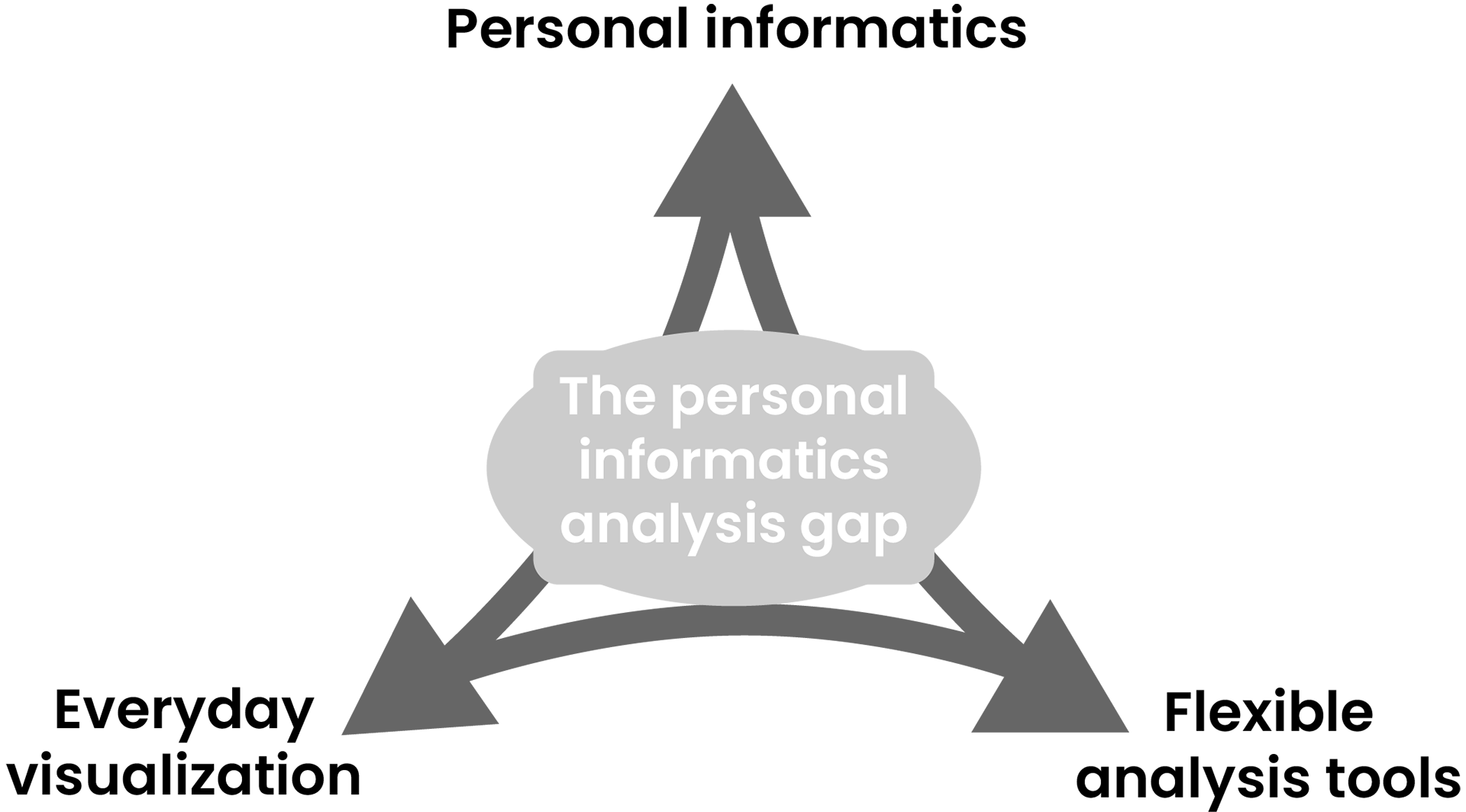Exploring the Personal Informatics Analysis Gap: "There's a Lot of Bacon"
Jimmy Moore, Pascal Goffin, Jason Wiese, Miriah Meyer
External link (DOI)
View presentation:2021-10-27T17:15:00ZGMT-0600Change your timezone on the schedule page
2021-10-27T17:15:00Z

Fast forward
Direct link to video on YouTube: https://youtu.be/8U4hGTpmzXE
Abstract
Personal informatics research supports people in tracking personal data for the purposes of self-reflection and gaining self-knowledge. This field, however, has predominantly focused on the data collection and insight-generation elements of self-tracking, with less attention paid to flexible data analysis. As a result, this inattention has lead to inflexible analytic pipelines that do not reflect or support the diverse ways people want to engage their data. This paper contributes a review of personal informatics and visualization research literature to expose a gap in our knowledge for designing flexible tools that assist people with engaging and analyzing personal data in personal contexts, which we call the personal informatics analysis gap. We explore this gap through a multi-stage longitudinal study on how asthmatics engage personal air quality data, and we report how participants: are motivated by broad and diverse goals; exhibited patterns in the way they explored their data; engaged with their data in playful ways; discovered new insights through serendipitous exploration; and were reluctant to use analysis tools on their own. These results present new opportunities for visual analysis research and suggest the need for fundamental shifts in how and what we design for supporting analysis of personal data.